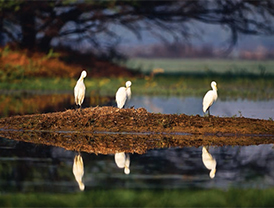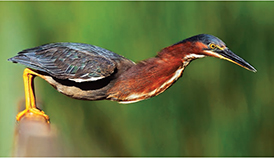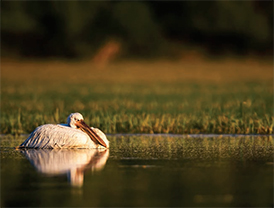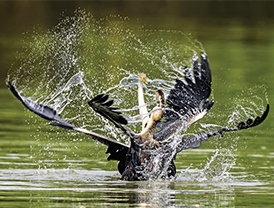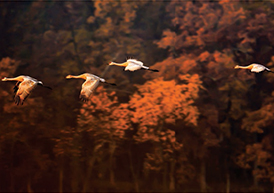 Prathap is a professional nature photographer and founder of a blog called ‘Nature Photography Simplified’. His motto is to simplify every photography concept to help beginners and amateur photographers. Subscribe to his blog to get his free eBook, ‘Bird Photography – 10 Mistakes and Solutions’, which has been instrumental in helping thousands of bird photographers around the world. To see more of his work visit www.prathapphotography.com.
Prathap is a professional nature photographer and founder of a blog called ‘Nature Photography Simplified’. His motto is to simplify every photography concept to help beginners and amateur photographers. Subscribe to his blog to get his free eBook, ‘Bird Photography – 10 Mistakes and Solutions’, which has been instrumental in helping thousands of bird photographers around the world. To see more of his work visit www.prathapphotography.com.
What’s important in bird photography?
Is it the camera, the lens, or the bird?
Imagine: You are photographing an American Bald Eagle. You have a professional camera with 8fps and a 600mm lens. Also, you have the required tripod support system.
Everything seems perfect. Isn’t it?
If you are a beginner, most likely you will point at the bird and shoot. Won’t you?
What do you get?
You get hundreds of bird photographs that may not be useful it all.
Are they worth sharing? Are you happy with what you got?
I bet not. Read this quote by the master photographer, Ansel Adams.
“There is nothing worse than a sharp image of a fuzzy concept.” ― Ansel Adams
It’s you.
Gear up to understand what makes a good bird photograph and you will not be the same again.
These 7 bird photography tips will take your bird photography to new heights.
1. Camera & Settings
Bird photography needs a decent focal length. No second thoughts about it. But you need not have to break your bank to get a super telephoto lens like 600mm. Go with a decent focal length like 300mm.
Make sure the lens has an image stabilisation feature like VR (Vibration Reduction for Nikon) or IS (Image Stabilization for Canon).Birds are always active. In order to stop the action you need a good number of frames per second. A camera body with a frame rate of at least 5 fps is good to capture the action.
Focussing is critical to the success. A poorly focused bird ruins the photograph. Get a camera body that has decent number of focus points. The more the better. Try for at least 39 focus points and above. Also, check the number of cross focus points available. Again, the more the better.
Here’s a good starting point with the settings:
• Work with semi-automatic modes so that you don’t have to worry much about the settings. Use Aperture Priority or Shutter Priority mode.
• Use continuous auto focus mode like AF-C (for Nikon) or AI-Servo (for Canon).
• Use burst or high-speed continuous modes.
• Use zone-focusing system and select 9-point or 21-point zone. This helps to keep the focus tight on the bird and makes the autofocus snappier.
• Use ISO-400 for action shots. If your camera is too noisy at ISO 400, try to avoid shooting in low light conditions.
Test every setting thoroughly. See what suits your style of photography the best. Stick with it.
2. It’s All About Light Photography is all about light.
Do you believe it? If you said yes, then learn to see the light. Study the light. Embrace it. Your bird photographs will shine.
Light has quality and direction. The quality of light is either soft or hard.
Soft light is the early morning and early evening light. Soft light is the best light for bird photography because:
• It helps to bring out the beautiful and subtle colors.
• It has a golden glow during dawn and dusk.
• It casts soft shadows on the bird creating a subtle depth.
Hard light is rest of the day light. During sunny days, hard light casts unwanted shadows making it a less favorable light for bird photography. The direction of light is frontal, side, or back.
Frontal light is the most favourable light for bird photography. It’s an ideal light to showcase the beauty of the bird.
Side light is the least favourable light. It casts the unwanted shadow on the bird.
Back light leads to creative photographs. It is helpful in creating silhouettes. It also helps in creating a halo (rim-light) around the bird giving it an angel look. This also helps to separate the bird from its background.
Then there is the diffused light. It’s the best light for portrait shots. It models the bird perfectly. There will not be any unwanted shadows. Diffused light allows you to shoot the whole day.
3. Composition
Your message should be loud and clear.
Convey your message though your photograph with a simple but strong composition. Composition for bird photography is not tough at all and yet it is often ignored.
Here are some principles of composition to make your bird photographs stand out:
• Use the rule of thirds to keep the bird off-center.
• Give enough breathing space in the direction of movement or gaze.
• Aim for light or colour contrast between the bird and the background. This helps the autofocus to focus faster. Also, it helps to make the bird stand out.
• Fill the frame with the bird so that the focus is only on the bird.
• Use clean or plain background and avoid distractions at all cost.
It’s not always possible to get the composition right in the field, though you should try your best. If needed, never hesitate to re-compose the image during post-processing stage.
4. Transport the Viewer into the Bird’s World
Our world is different from the bird’s world.
Just imagine. When you talk to someone, how do you connect with him/her? Through eye contact… right? The eye contact is critical in establishing a relationship.
If you have to connect with the birds, you have to do the same. You have to establish an eye contact with the bird to make successful and intimate bird photographs. How do you do that?
Go Low and Go Slow…
Always try to photograph the birds from their eye-level. Except the birds in flight, of course!
Bend down, kneel down, lay down, or do whatever it takes to get to the bird’s eye-level. Some of the obvious benefits are:
• You’ll get intimate photographs of birds, because you can make an eye connection.
• You’ll get pleasing blur (or bokeh) around the bird, because normally the background will be too far.
• You’ll not disturb the bird, because you can’t move much. You are not a threat anymore.
• You’ll transport the viewer into the bird’s world.
5. Capture their Actions and Behaviour
It’s quite easy to photograph birds in action.
Why? They hardly sit still! Action is always there, but it requires more effort and patience. But it’s fun.
Here are few tips to capture the action:
• Photograph early in the morning when birds are very active.
• Use burst shot mode to take several photographs during the action.
• Track the bird until focus is locked before pressing the shutter.
• Learn to anticipate the action by studying their behaviour.
Birds tend to ignore you when they are very hungry. It is very easy to photograph them in action at these times. But care should be taken not to disturb them. Maintain considerable distance between you and them. Capturing bird’s behaviour is tougher! They become alert the moment you are in their sight. An alert bird is ready to takeoff anytime. So, you have to be patient. You can observe the bird’s behaviour only when they on their own. They have to be comfortable in your presence. There are few ways to make the bird comfortable:
• Go early in the morning when birds are actively feeding.
• Hide behind a bush or tree and move slowly.
• Sit or lie down quietly. Wait patiently until the bird ignores you.
• Visit the location several days until the bird becomes comfortable with your presence.
Remember to learn about the birds that you are photographing. Study their behaviour while you are waiting. The more you understand the bird, the better your photographs will be.

